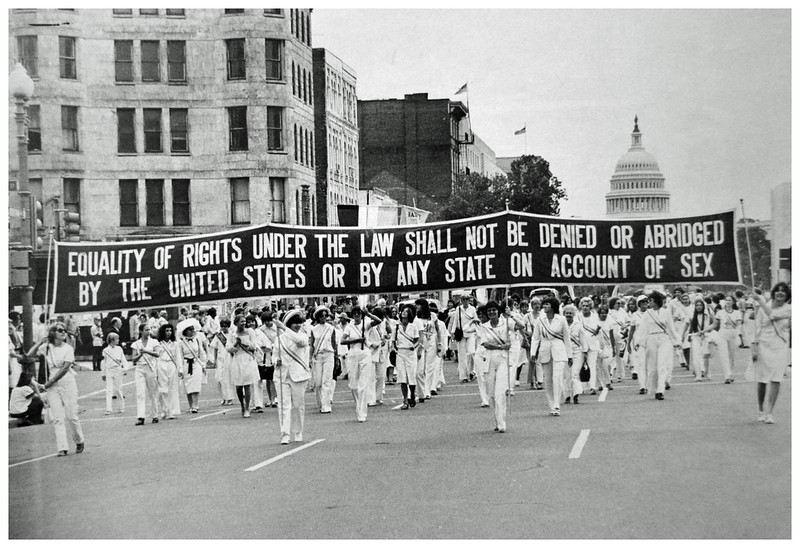
This is the fifth in a six-part series examining the half-century fight to add women to the U.S. Constitution—and a game plan on where we go from here.
Get caught up:
- Part 1: “We Want In!,”
- Part 2: A Long History of Obstruction, Delay and Trickery
- Part 3: A Patchwork of Laws, Statutes and Court Rulings
- Part 4: From Addressing the Wage Gap to Combatting Violence Against Women, We Still Need an Equal Rights Amendment
And check back next Wednesday for the final installment.
Part 5: Where We Go From Here
“We know that equality for women will always elude us when it isn’t etched into the Constitution,” Rep. Carolyn Maloney (D-N.Y.), an advocate for the ERA in Congress, says.
We are in the final homestretch of the long-fought battle for the ERA—but the fate of the amendment rides on the fall elections.
“The ERA resolution is being blocked by McConnell and by the leadership of the Republican party,” says Feminist Majority Foundation president (and Ms. publisher) Eleanor Smeal, who for part of the 1970s and ’80s was president of the National Organization for Women, which led the ERA fight.
“That’s why we have to flip the Senate. It isn’t individual Republicans. I believe if the ERA were put on the Senate floor, we would pass it. The problem is the leadership, and whoever they are beholden to. We must flip the Senate to have leadership that will remove the time line.”
Democrats need a net gain of four seats to win control of the Senate, and Smeal says they have a good chance in six states: Arizona, Colorado, Maine, North Carolina, Kansas and Iowa.
Like in Virginia, feminists have strong on-the-ground campaigns in these states and are using the ERA to motivate people to get out and vote.
“In Virginia in 2019, the ERA was ‘on the ballot.’ It was one of the motivating reasons that people voted,” Smeal says. “I think that women’s rights will be on the ballot in some key states this November. It will be the reason people will say ‘I’ve had it with these Republicans. I want equality for women.’”
Supporters are also working to win additional ERA ratifications in states such as Arizona and North Carolina. In Arizona, advocates are hoping to flip their state’s legislature this November and bring the total to 39 ratified states.
Arizona state Sen. Victoria Steele told Ms., “We are going to do in Arizona what Virginia just did. This year all seats are up for election. We have turned purple, and we’re about to turn blue.”
Arizona advocates are using the ERA in the elections not only to flip the state legislature, but also to win a second U.S. Senate seat for Democrats.
“It’s a huge, huge issue here,” Steele says. “They have fought us [on the ERA] at every turn. But we’re not giving up.”
As Smeal says, “It was never a matter of if, only when the ERA would be ratified. Women have fought long and hard for equal rights under the law and waited too long for full equality. It’s time—long overdue—for the 38 states that have ratified the ERA to be recognized and for the ERA to be enshrined in the U.S. Constitution.
“The days of women working twice as hard for half as much must end.”
Keep reading:
This piece is excerpted from the Spring 2020 issue of Ms.
Become a Ms. member to read the rest—and get even more of our feminist reporting and analysis delivered to your door, or to your mobile device, each time we release a new issue!





